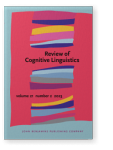Vol. 21:2 (2023) ► pp.469–485
Move in a crowd
Social crowding and metaphorical perspectives on the movement of events in time
When spatializing time, individuals can either say that they walk towards the future as though time is a stationary landscape (called ego-moving perspective), or that the future time moves towards them (called time-moving perspective). A substantial body of experimental research has shown that people’s adoption of these two temporal perspectives may be malleable, influenced by a broad set of factors. In the current research, we examined the novel possibility that the mere crowdedness of the environment can influence people’s abstract thinking about time. We contended that exposure to the crowd may be linked to increased anxiety, which can in turn lead to a greater preference for the time-moving perspective in the resolution of temporal ambiguity. Two experiments found that social crowding, whether induced via a visualization task or through an assignment to a crowded workstation, was sufficient to alter participants’ perspectives on the movement of events in time. Further, we found that anxiety mediated the relationship between crowdedness and temporal reasoning. Taken together, these results offer unique insights into the cognitive consequences of social crowding and provide a more complete understanding of how people adduce temporal relationship.
Article outline
- 1.Introduction
- 2.Experiment 1
- 2.1Method
- 2.2Materials and procedure
- 2.3Results and discussion
- 3.Experiment 2
- 3.1Method
- 3.1.1Participants
- 3.1.2Materials and procedure
- 3.2Results and discussion
- 3.1Method
- 4.General discussion
-
References
